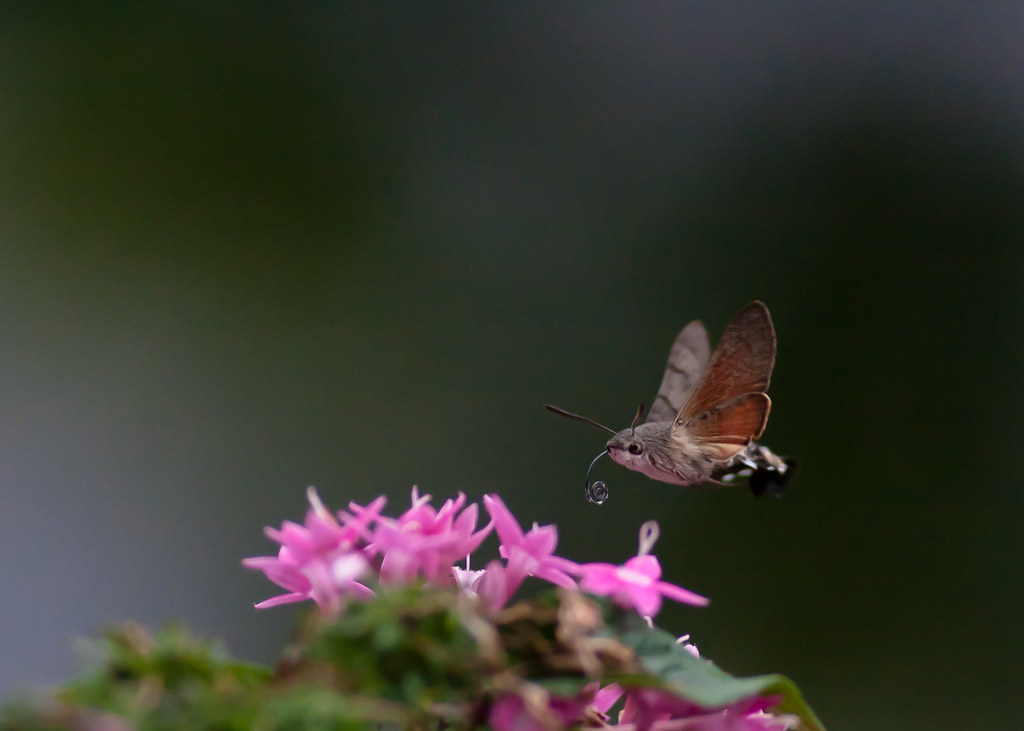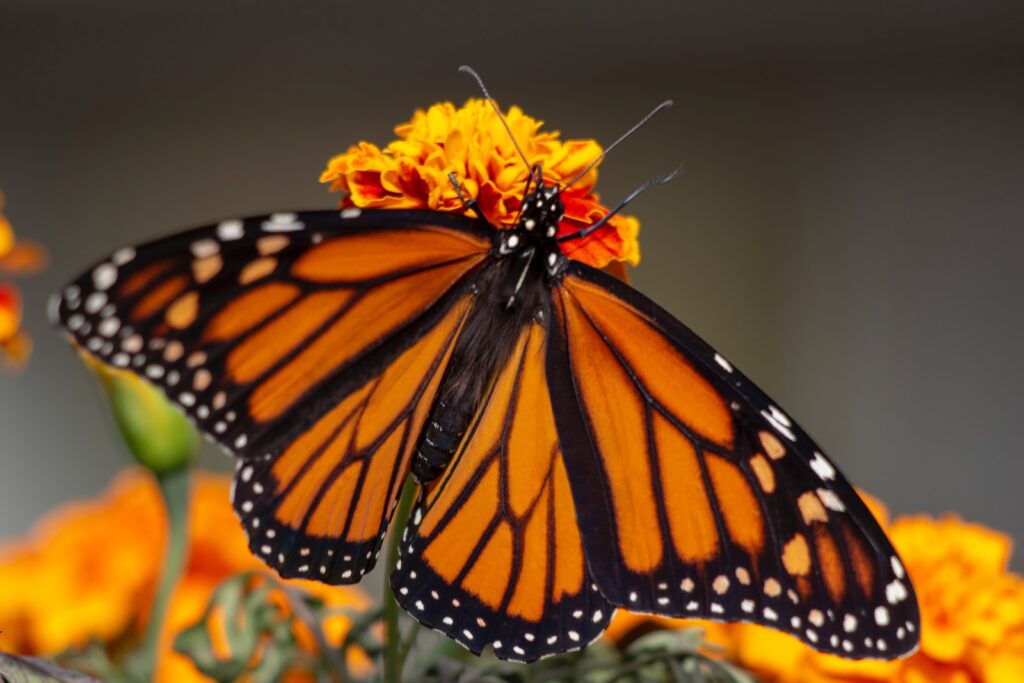Creating a butterfly garden on your balcony in Florida is a wonderful way to attract and support these beautiful creatures. Here are some steps to help you grow a balcony butterfly garden in Florida:
- Assess Your Balcony: Start by assessing the available space on your balcony. Consider factors such as sunlight exposure, wind conditions, and the size of your balcony. Determine how much space you have for containers or planters and if you have any vertical surfaces for climbing plants.
- Research Butterfly-Friendly Plants: Familiarize yourself with butterfly-friendly plants that thrive in containers and suit Florida’s climate. Choose a variety of nectar plants to provide a continuous food source for butterflies. Some suitable options for Florida include milkweed (Asclepias spp.), pentas (Pentas lanceolata), salvias (Salvia spp.), lantanas (Lantana camara), and zinnias (Zinnia spp.). Additionally, consider host plants specific to the butterfly species you wish to attract. For example, passionflower vines (Passiflora spp.) are host plants for the Zebra Longwing Butterfly.
- Select Containers and Soil: Choose containers that fit your balcony space and allow for proper drainage. Opt for lightweight and durable materials like plastic or resin. Select potting soil that is well-draining and specifically formulated for container gardening. Adding organic matter, such as compost or coconut coir, can enhance moisture retention and nutrient content.
- Plant Placement: Position your containers strategically to maximize sunlight exposure. Most butterfly-friendly plants require at least six hours of direct sunlight daily. Consider utilizing vertical space by adding hanging baskets or installing trellises for climbing plants. Place taller plants at the back or center, with shorter plants toward the front or edges to create depth and visual interest.
- Watering and Maintenance: Water your plants as needed to keep the soil evenly moist but not waterlogged. Container plants tend to dry out more quickly, so monitor the moisture level regularly and adjust watering accordingly. Check for any pests or diseases, and take appropriate measures to address them promptly. Remove spent flowers and trim back any overgrowth to promote new blooms and maintain a neat appearance.
- Provide Water Sources: Butterflies also need access to water for drinking and puddling. Place shallow dishes or saucers filled with water in your garden for them to sip from. Add a few rocks or pebbles to provide perching spots and prevent accidental drowning.
- Add Butterfly Attractants: Enhance the attractiveness of your butterfly garden by incorporating additional features. Butterflies are attracted to bright colors, so consider adding decorative elements like colorful garden stakes, butterfly feeders with nectar, or butterfly puddlers filled with sand and water. These features can help draw more butterflies to your balcony garden.
- Be Patient and Observe: It may take some time for butterflies to discover your balcony garden. Be patient and observe their behavior and preferences. Take note of the types of butterflies that visit and adjust your plant selection or garden layout accordingly.
By following these steps and providing the necessary elements, you can create a delightful butterfly garden on your Florida balcony. Enjoy the beauty of the butterflies as they visit and contribute to their conservation efforts by providing a habitat that supports their life cycle.

Best Balcony Container Gardening Plants in Florida
When it comes to selecting plants for balcony container gardening in Florida, it’s important to consider the region’s warm and often humid climate. Here are some top choices for balcony container gardening in Florida:
- Coleus (Plectranthus scutellarioides): Coleus is a popular choice for container gardening due to its vibrant foliage. It comes in a variety of colors and patterns, providing visual interest to your balcony. Coleus thrives in partial shade to full shade and is relatively low maintenance.
- Pentas (Pentas lanceolata): Pentas is a heat-tolerant plant that produces clusters of colorful flowers in shades of red, pink, and white. It attracts butterflies and hummingbirds, making it a great addition to a balcony garden. Pentas thrives in full sun to partial shade and requires regular watering.
- Geraniums (Pelargonium spp.): Geraniums are classic balcony plants known for their colorful blooms and ability to tolerate heat and dry conditions. They come in a variety of colors and are relatively easy to care for. Geraniums prefer full sun but can tolerate some shade.
- Dwarf Marigolds (Tagetes spp.): Dwarf marigolds are compact and perfect for small containers. They offer bright and cheerful flowers in shades of orange and yellow. Marigolds are heat-tolerant and require full sun. They are also known for repelling some pests, making them a useful addition to a balcony garden.
- Lantanas (Lantana camara): Lantanas are versatile plants that thrive in Florida’s heat and humidity. They produce clusters of small, colorful flowers in shades of yellow, orange, pink, and purple. Lantanas are loved by butterflies and are low maintenance. They prefer full sun but can tolerate some shade.
- Dwarf Zinnias (Zinnia spp.): Dwarf zinnias are compact and perfect for containers. They offer a profusion of colorful flowers in various shapes and sizes. Zinnias are heat-tolerant and thrive in full sun. They attract butterflies and make charming additions to a balcony garden.
- Dwarf Basil (Ocimum basilicum): Dwarf basil varieties are ideal for small containers and provide a fresh herb option for your balcony garden. They offer aromatic leaves that can be used for cooking or as decorative foliage. Basil prefers full sun and regular watering.
- Dwarf Citrus Trees (Citrus spp.): Dwarf citrus trees, such as Meyer lemon or calamondin orange, can be grown in containers on a sunny balcony. They offer both decorative appeal and the opportunity to enjoy homegrown citrus fruit. These trees require full sun and regular watering.
Remember to choose appropriate-sized containers with good drainage, use a quality potting mix, and water your plants regularly to meet their specific needs. By selecting these balcony-friendly plants, you can create a vibrant and flourishing garden that thrives in Florida’s unique climate.

